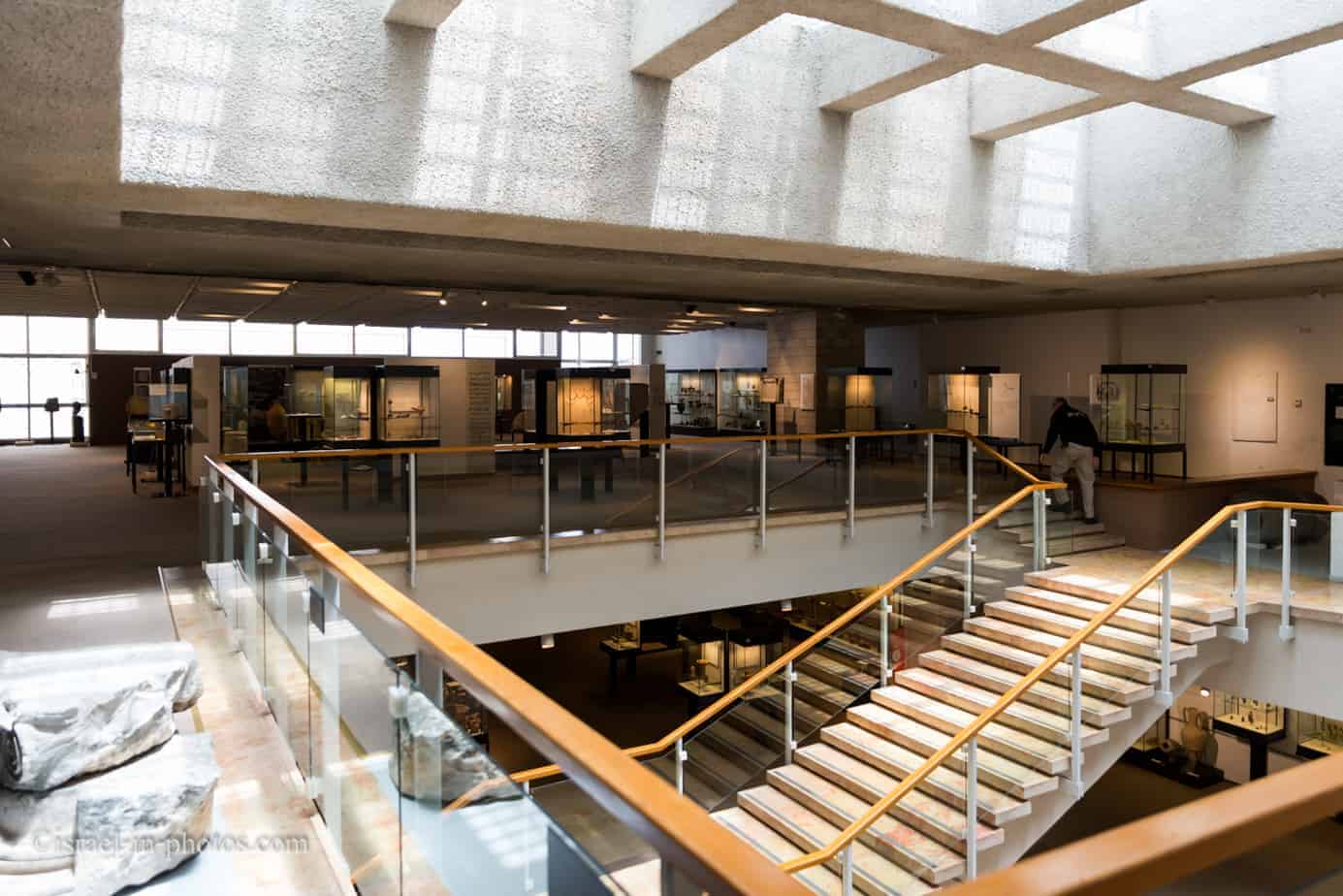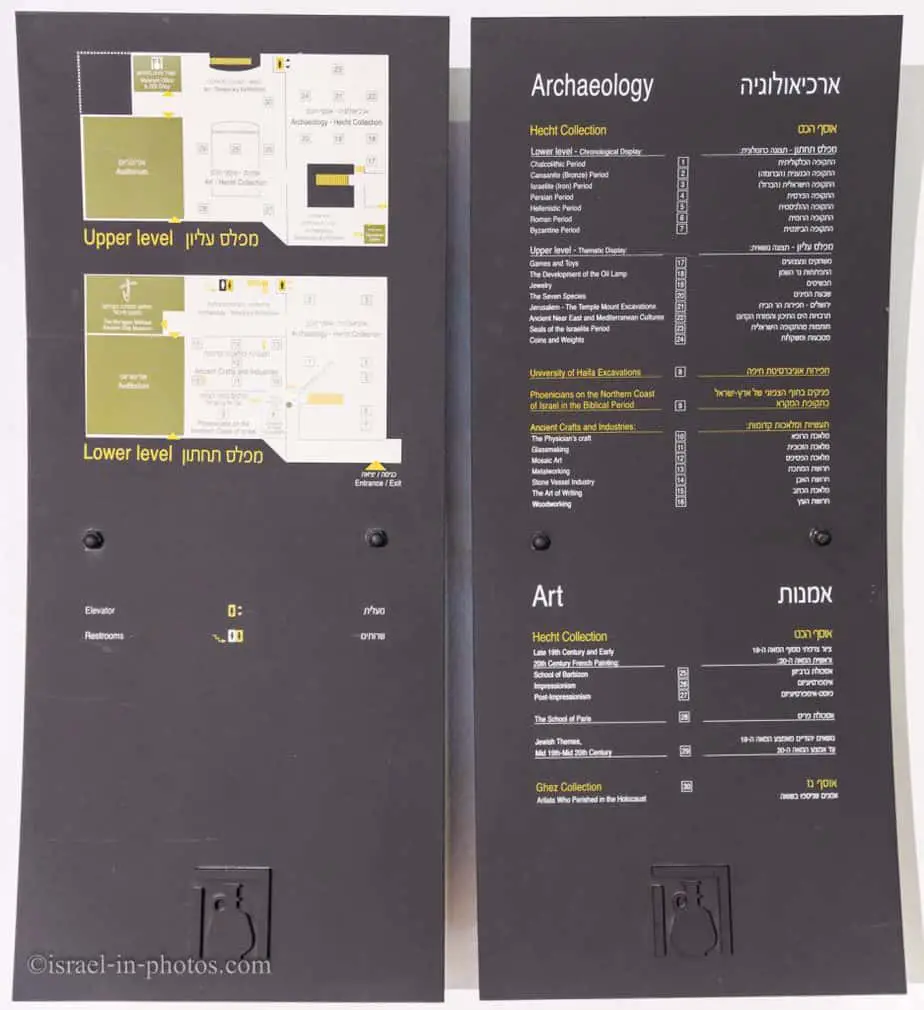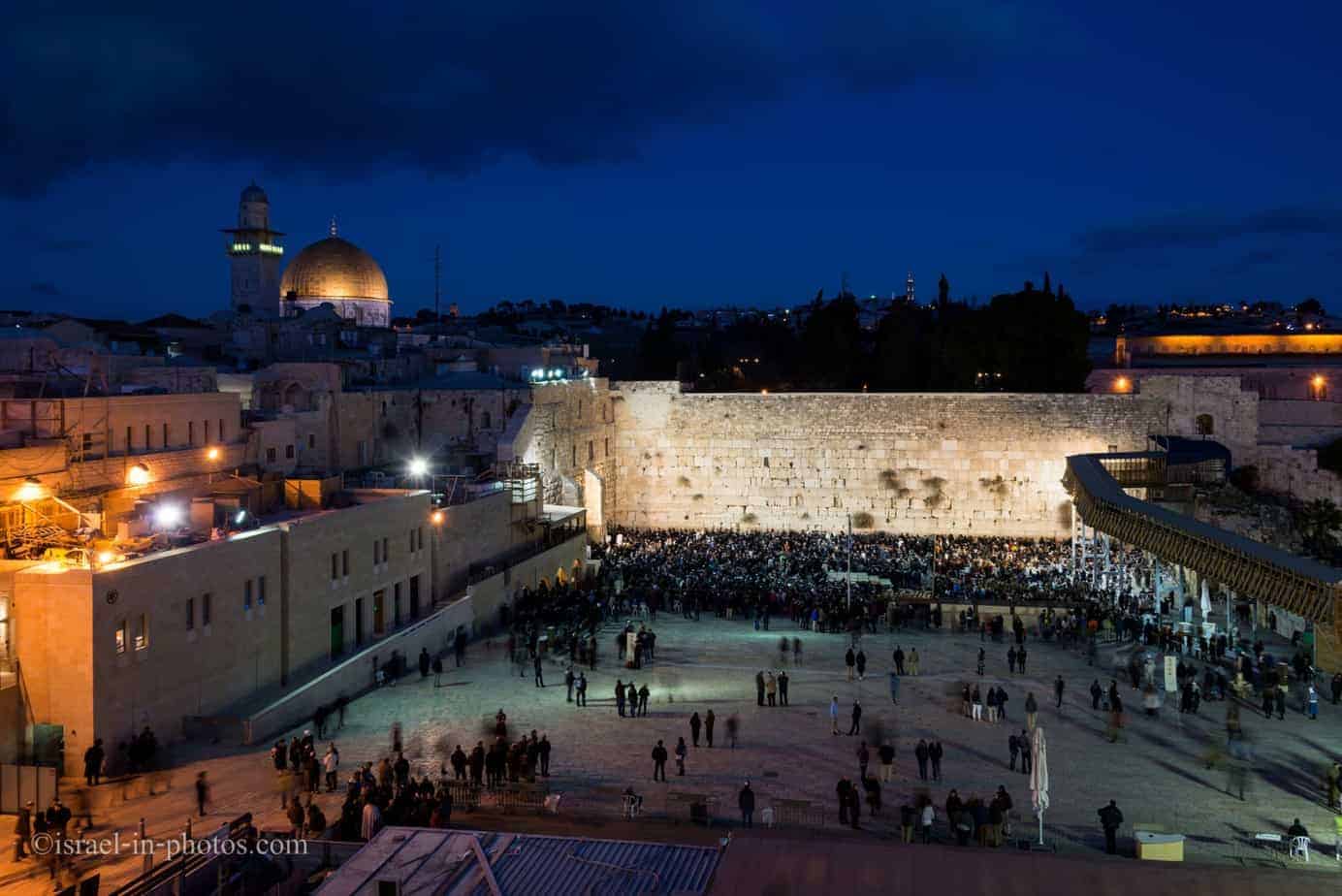Hecht Museum in Haifa – Visitors Guide
Hecht Museum at the University of Haifa presents mostly archeological findings and some art exhibits. Moreover, the entrance is free.
Table of Contents
Map
Hecht Museum is located on the ground floor of Eshkol tower at Haifa university. The address is Abba Khoushy Avenue 199. And the easiest way to reach this spot is by entering “Hecht Museum” into Waze or clicking this link.
Directions for drivers: Link to Waze and Link to Google Maps
Directions for public transport: Link to Moovit
Interactive map of the area:
Note: the museum is located in the same building as Haifa University Viewpoint. And you can see both during a visit.
And here is a map of the museum:
As you can see, the museum has two levels dedicated to archeology and art.
Parking
If you are visiting during summer vacation, holidays, or weekends, you can easily find parking on the campus near Eshkol tower. But during school days, finding parking can be tricky.
Entrance Fee
Free.
Opening Hours
Sunday, Monday, Wednesday, and Thursday: 10:00 – 16:00
Tuesday: 10:00 – 19:00
Friday: 10:00 – 13:00
Saturday: 10:00 – 14:00
Note: the opening hours were updated in November 2022.
Contact Information
Phone: 04-8257773, 04-8240308
Email: hechtmus@univ.haifa.ac.il
Facebook: hechtmus
Website: mushecht.haifa.ac.il
The Archaeololical Wing
We will start our visit to the archeological wing. And here is a list of items that can be found here:
The permanent displays in the new wing are thematic and based both on archaeological artifacts from the Hecht Collection and those on loan from the Israel Antiquities Authority:
- Archaeology of Eretz-Israel in Chronological Sequence: Beginning with the Chalcolithic Period and ending in the Late Byzantine period.
- Thematic Display: Jewish coins, West Semitic seals, weights, jewelry, toys, oil lamps, and artifacts from the Temple Mount Excavations in Jerusalem.
- Phoenicians on the Northern Coast of Israel in the Biblical Period: The contribution of the Phoenicians, the sea-going traders, to the technology of harbor engineering, development and distribution of the alphabetic script, and more.
- Ancient Crafts and Industries: Metalworking, woodworking, stone vessels, glassmaking, mosaic art, the art of writing, and the physician’s craft.
- Ma’agan Mikhael Ancient Ship: The hull of the 2400-year-old ship, its anchor, and cargo.
- Findings from the University of Haifa Excavations
Source: museums.gov.il
You can see several findings near the entrance to the museum. Here is, for example, a fragment of a mosaic floor from the synagogue at Beit Shean:
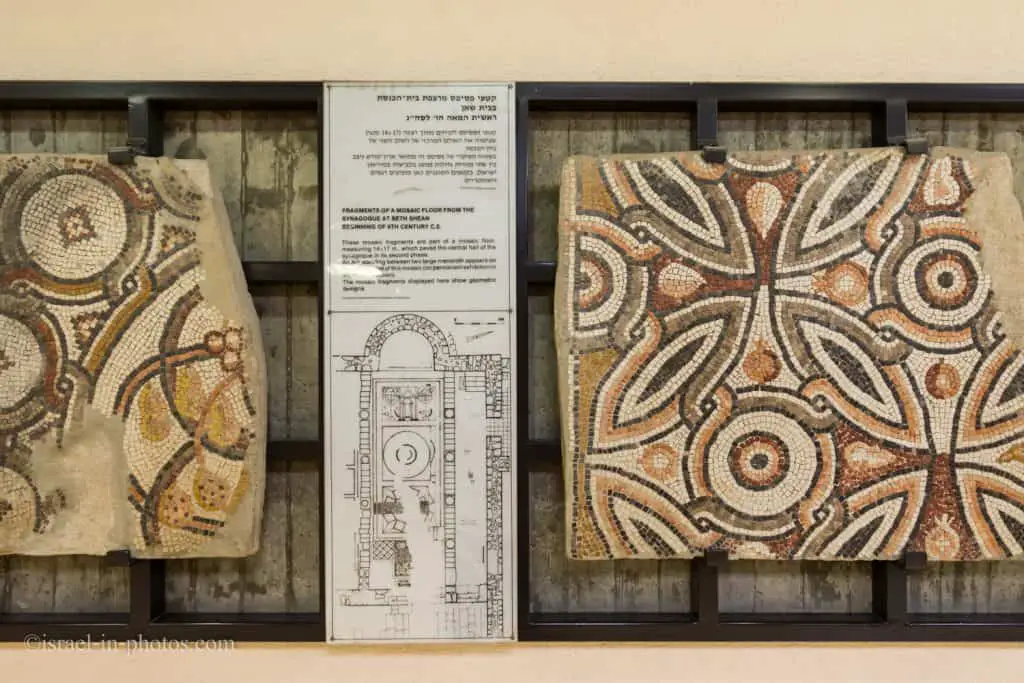
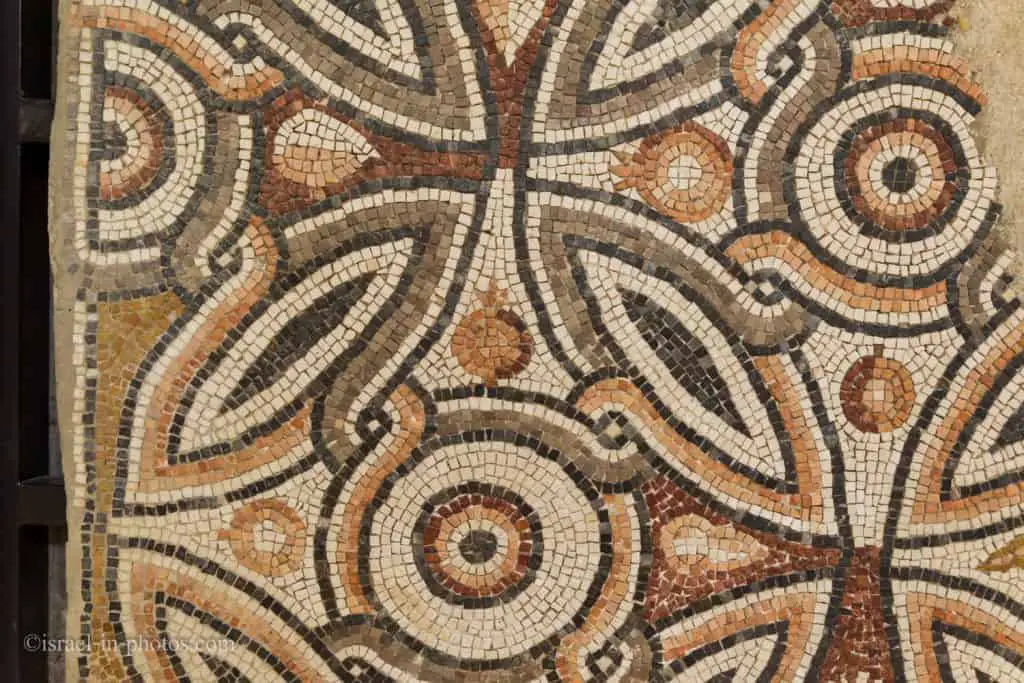
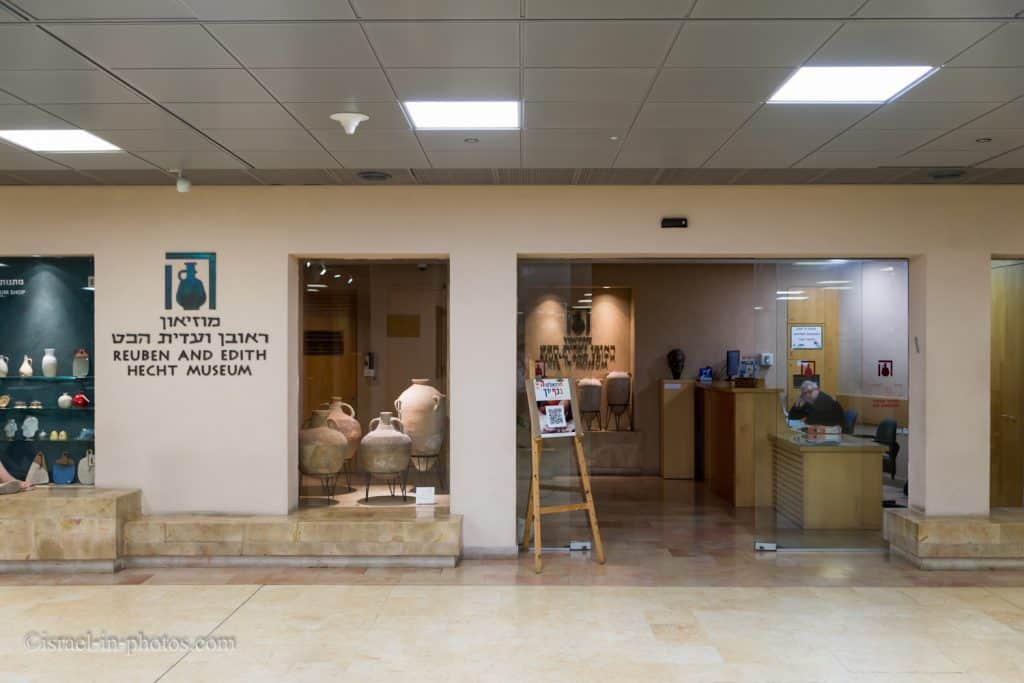
As you enter the museum, you will walk in a corridor full of archeological findings from various places in Israel.

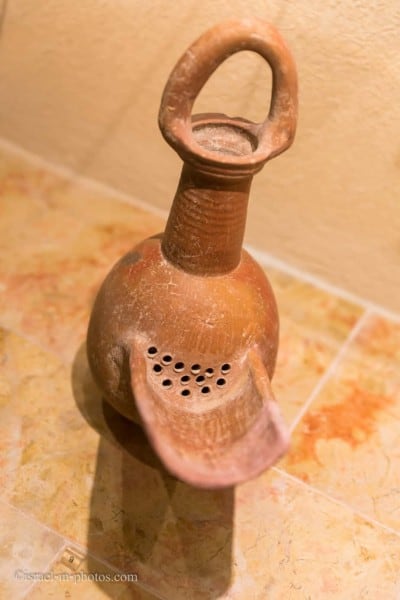

Archaeology in Chronological Sequence
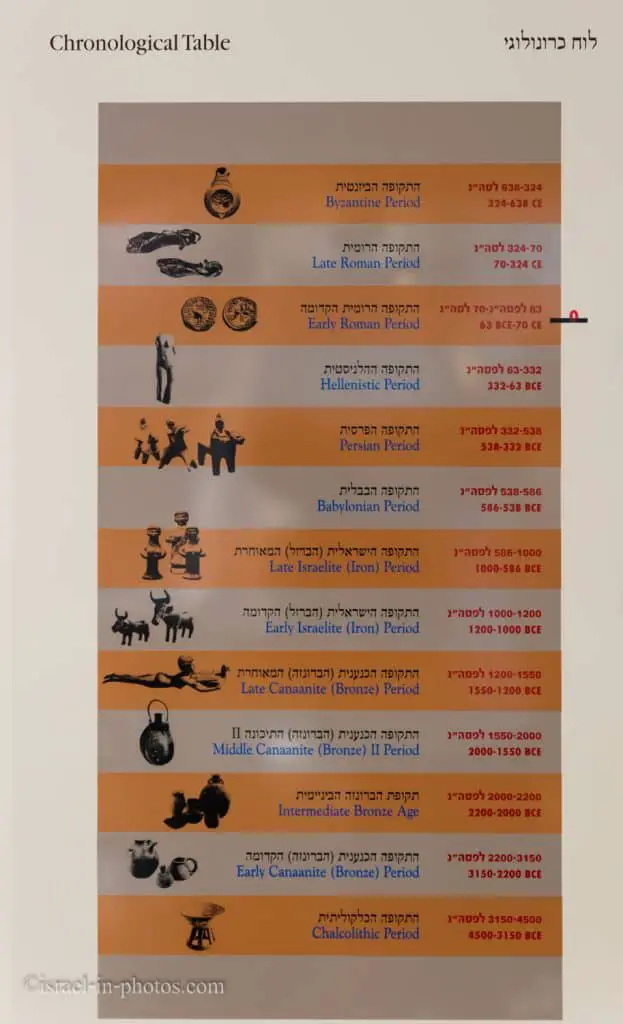

Here are photos of some of the findings:


Phoenicians on the Northern Coast



The data in the photo above sorts animals by body size, and big animals were the first to become extinct.

Cuneiform script: “Nebuchadnezzar king of Babylon, a supporter of the Temple Esagila and the Temple of Ezida, the firstborn son of Naboplassar King of Babylon.”

The Four Room House
We saw four-room houses in various places in Israel. For example, you can see an actual photo in my post about Tel Hazor.
Model of an Israelite House from the Kingdoms of Judah and Israel period (centuries 10-7 BCE).

This model is of a one-story house, although two-floor buildings have also been found, as well as those with one story and an attic. In a typical house, the entrance was through a hinged, wooden door that could be bolted if necessary and led directly into the courtyard. This was divided into two, one half open to the sky and the other half roofed.
Installations for cooking food and baking bread were located in this courtyard; some houses possessed an additional outside courtyard where a large silo would be situated. Two rooms led off the courtyard. Being windowless, they were illuminated and ventilated solely through their doors. A staircase led from the inside courtyard to the flat roof, serving various purposes, including drying fruit.
Source: sign
The Great Revolt in the Galilee
In 66 CE, the Jewish revolt against Roman rule broke out. Four years later, in 70 CE, Jerusalem and the Temple lay in ruins. Three years after that, the Masada stronghold, in which the last of the Jewish insurgents fortified themselves, fell. The revolt was suppressed – the iron hand of the Roman military wrought havoc and destruction among the rebellious Jewish settlements. Thousands of Jews were put to death, and thousands more were sold into slavery.
Source: official site

Ma’agan Michael Ancient Ship
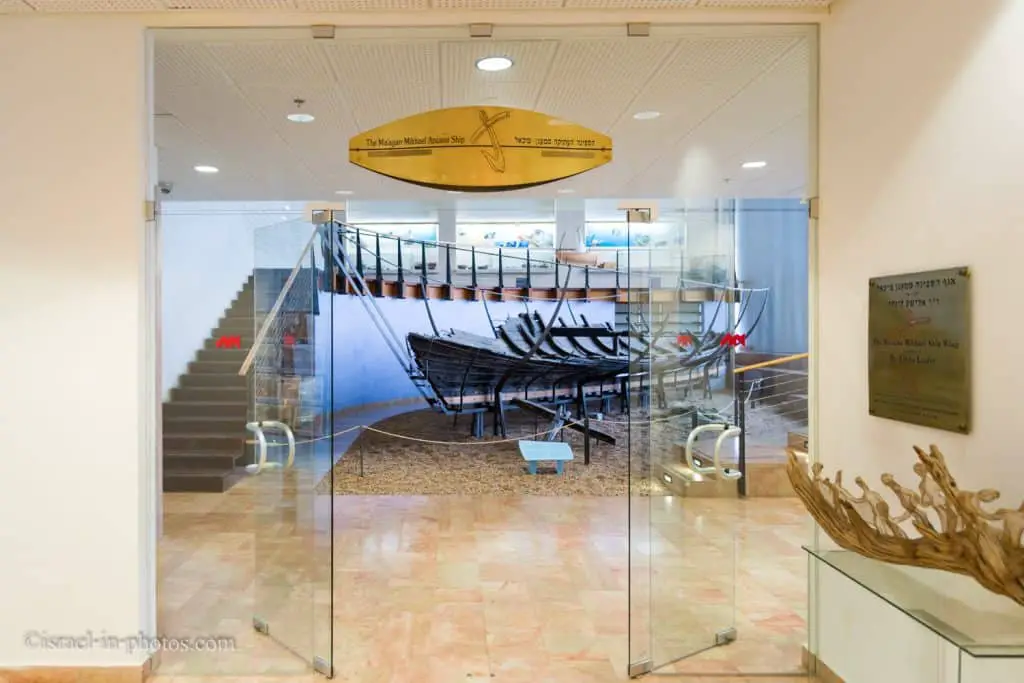
In the autumn of 1985, remains of a 2400 year old merchantman were discovered in shallow water off the coast of Kibbutz Ma’agan Mikhael. A thick layer of sand and a large number of ballast stones covered the ship, thus protecting the wood and other perishable materials. from the elements.
Three seasons of excavation (1988-1989) were conducted by a team of marine archaeologists from the Center for Maritime Studies and volunteers from Israel and abroad. The ship’s remains and its contents were retrieved in an excellent stage of preservation. The hull was dismantled and placed in our laboratory, where the timbers underwent a long conservation process and are now ready for the reconstruction of the vessel.
The original measurements of the vessel were approximately 12.5 meters long and 4 meters wide. Its load capacity was about 15 tons. The ship sailed under a square rig with its mast step intact and was probably manned by a crew of 4-6 mariners. A rare one-armed wooden anchor was found at the right-hand side of the hull.
The ship sailed the Mediterranean during the Persian Period, circa 400 BCE. The chance discovery of this unique vessel enriches our knowledge of ancient seafaring and contributes to our understanding of shipbuilding, adding a missing link in naval architecture.
Source: sign

When looking at the photo above, notice the unusual shape of the anchor.
The Anchor of the Ma’agan Mikhael Shipwreck
The one-armed oak anchor was found right to the bow of the shipwreck, attached to two ropes, the main anchor rope and the trip rope. Lead was inserted inside the anchor stock to ensure the anchor would sink to the sea bottom with the arm downwards. The anchor’s copper nail protected the wood from erosion.
Source: sign

What was the cargo of this ship?
Thirteen tons of stones and rocks were found during the excavation. The majority of the stones are blueschist, with some volcanic stones and limestone. Apparently, the blueschist was the ship’s cargo: it was used for roofing, flooring, and for decorative articles. The Greek island of Evvia (Euboea), northeast of Athens, was identified as the source of the blueschist.
Source: sign


Mosaic Art
Mosaic art refers to a series of small, chiseled stones inlaid in a floor or on a wall. The art began in Asia Minor in the 8th century BCE, and the earliest mosaics included geometric patterns that were composed of natural stream pebbles. In the 3rd century BCE, mosaic artisans went over to the use of stones cut especially for the mosaic.
The foundation for the mosaic was made of several layers: a filling containing sand and stones; on top of this, pebbles and thick plaster: and on top of this, a thin sheathe of plaster, into which the stones were embedded. There are three known methods of arranging a mosaic:
(a) Direct method: the mosaic stones are arranged in individual units on the soft cement; (b) Indirect method: the mosaic stones are arranged on the sand, and sheets of cloth stuck to the stones, then transferred to the bed of wet cement; the cloth sheet is removed with hot water after the cement has dried; (c) Reverse method: the stones are stuck on a cloth sheet or on a wooden board, which is then turned over so that the stones – set deep in the wet cement – face downwards; the sheet or board is removed after the cement has hardened. The last two methods enabled the artisan to prepare and arrange the mosaic stones ahead of time in the workshop according to the design requested.
Source: sign
And here are several additional photos of mosaic floor from a synagogue in Beit Shean:


On the second floor of the Hecht Museum, you can find an exposition dedicated to the ancient city of Susita National Park (Hippos).

The Art Wing
Also, on the second level, you can visit the art wing.
The Art Wing of the Museum was inaugurated in early 1989. Displaying artwork from the Hecht Family Collection, this wing presents important trends in art, beginning in the 19th century. Its emphasis is on Impressionism and the work of Jewish artists in the School of Paris. This collection includes works by Van Gogh, Manet, Monet, Pissarro, Soutine, and Modigliani.
Permanent Art exhibitions:
- French Painting 1830-1930: Barbizon School, Impressionism, Post-Impressionism, School of Paris.
- Jewish Art from Mid-19th to Early 20th Century: Dutch, German and Eastern artists. Works by Van-Gogh, Manet, Monet, Pissarro, Soutine, Modigliani, Israels, Struck, and others
- Ghez Collection: Works by Jewish artists who perished in the Holocaust
Source: museums.gov.il

And the last exhibition we saw was dedicated to ancient coins and the Temple Mount.



About
The Hecht Museum at the University of Haifa was inaugurated in 1984. It was the initiative of the late Dr. Reuben Hecht, founder of the “Dagon Silos” in the port of Haifa and a founding member of the University of Haifa Board of Governors.
From his youth, Dr. Hecht was interested in the archaeology of the Land of Israel, and he assiduously collected archaeological artifacts representing the material culture of the Land of Israel in ancient times. Dr. Hecht, known for his Zionist activities, believed that archaeology was an important expression of Zionism and that the discovery of ancient artifacts was proof of the link between the Jewish people and the Land of Israel.
About two years before Dr. Hecht’s passing in April 1993, he began planning an expansion of the Museum. The management of the University of Haifa and the directors of the Hecht Foundation continued with this initiative, and the Museum’s new wing was inaugurated in October 1998.
Source: museums.gov.il
Summary
We spent about two hours at Hecht Museum. It was educational and interesting. We enjoyed our visit, and I recommend this museum to everybody who loves archeology, art and learning new things.
For additional attractions in this area, browse the interactive map at the beginning of this article.
Have you ever been to the Hecht Museum? Tell us about your experience in the comments below.
That’s all for today, and I’ll see you in future travels!
Stay Tuned!
Additional Resources
Here are several resources that I created to help travelers:- Trip Planner with Attractions and Itineraries is the page that will help you create your perfect travel route.
- What is the Best Time to visit Israel? To answer this question, we will consider the weather, prices, holidays, festivals, and more.
- Information and Tips for Tourists to Israel will answer the most common questions tourists have about Israel (including safety, passports, weather, currency, tipping, electricity, and much more).
- Israel National Parks and Nature Reserves include a complete list, top ten, map, tickets (Israel Pass, Matmon, combo), and campsites.
- If you are looking for things to do, here are the pages for Jerusalem, Tel Aviv, Haifa, Sea Of Galilee, Akko (Acre), Eilat, Nazareth, Safed (Tzfat), and Makhtesh Ramon.

